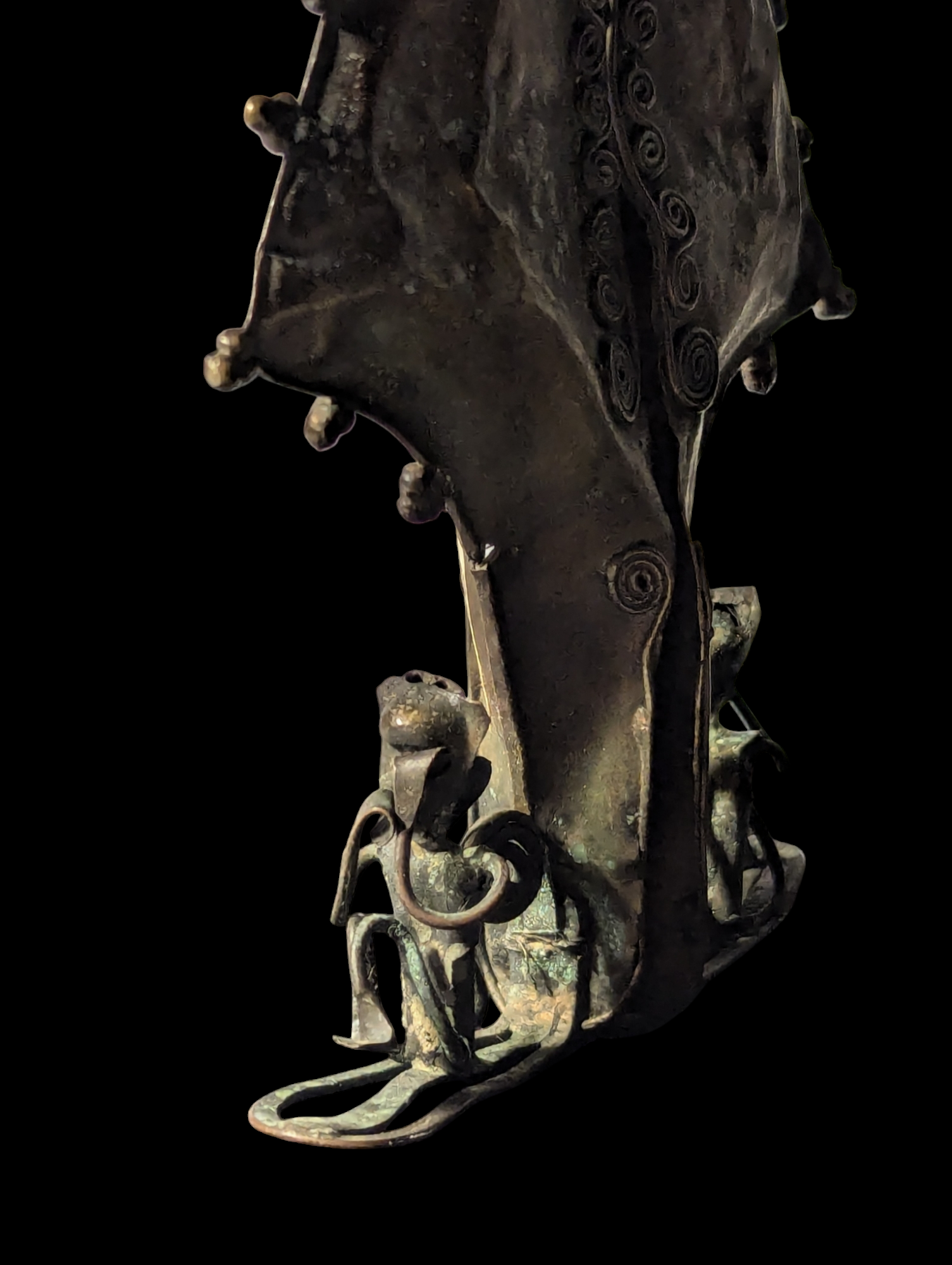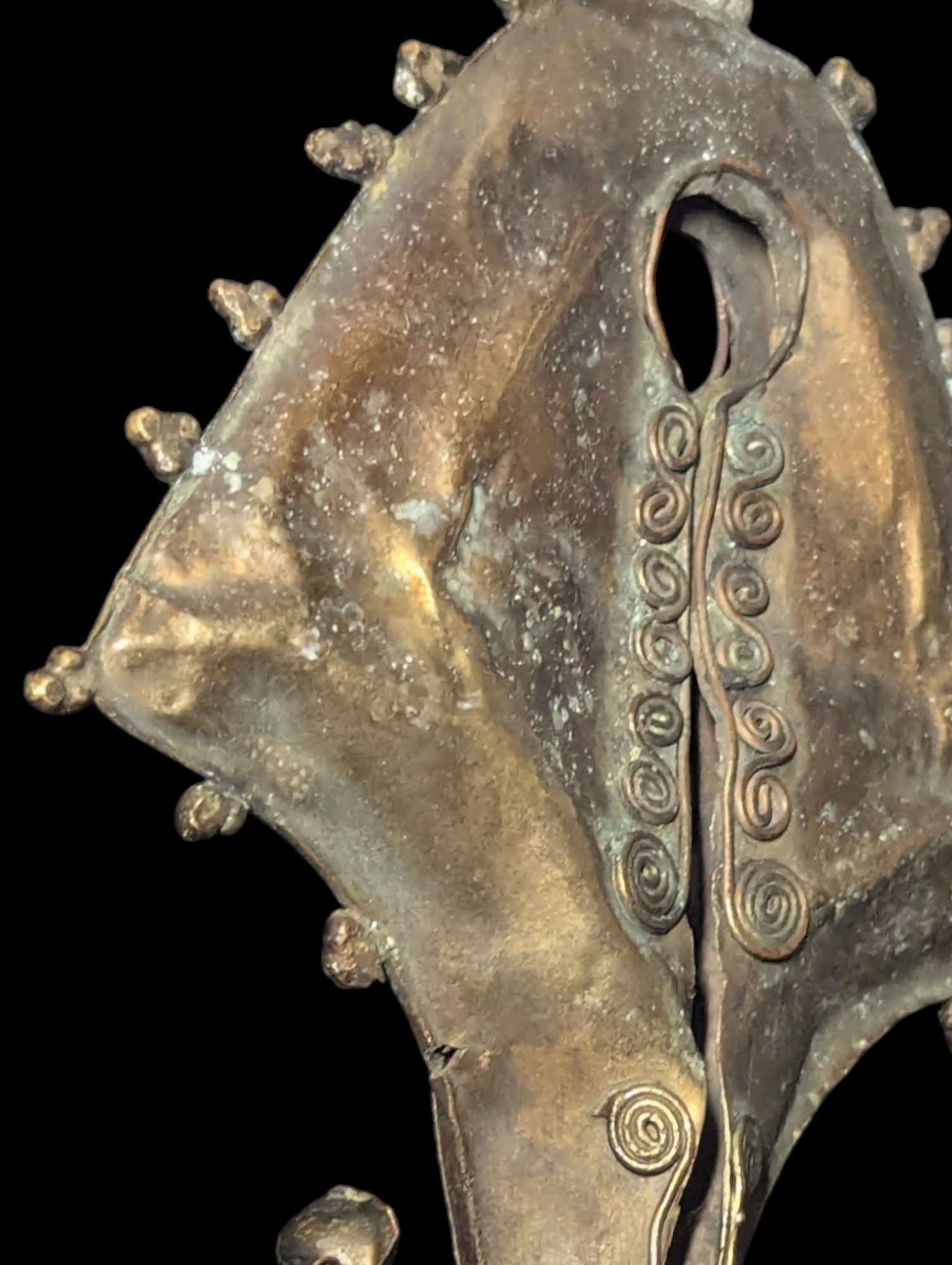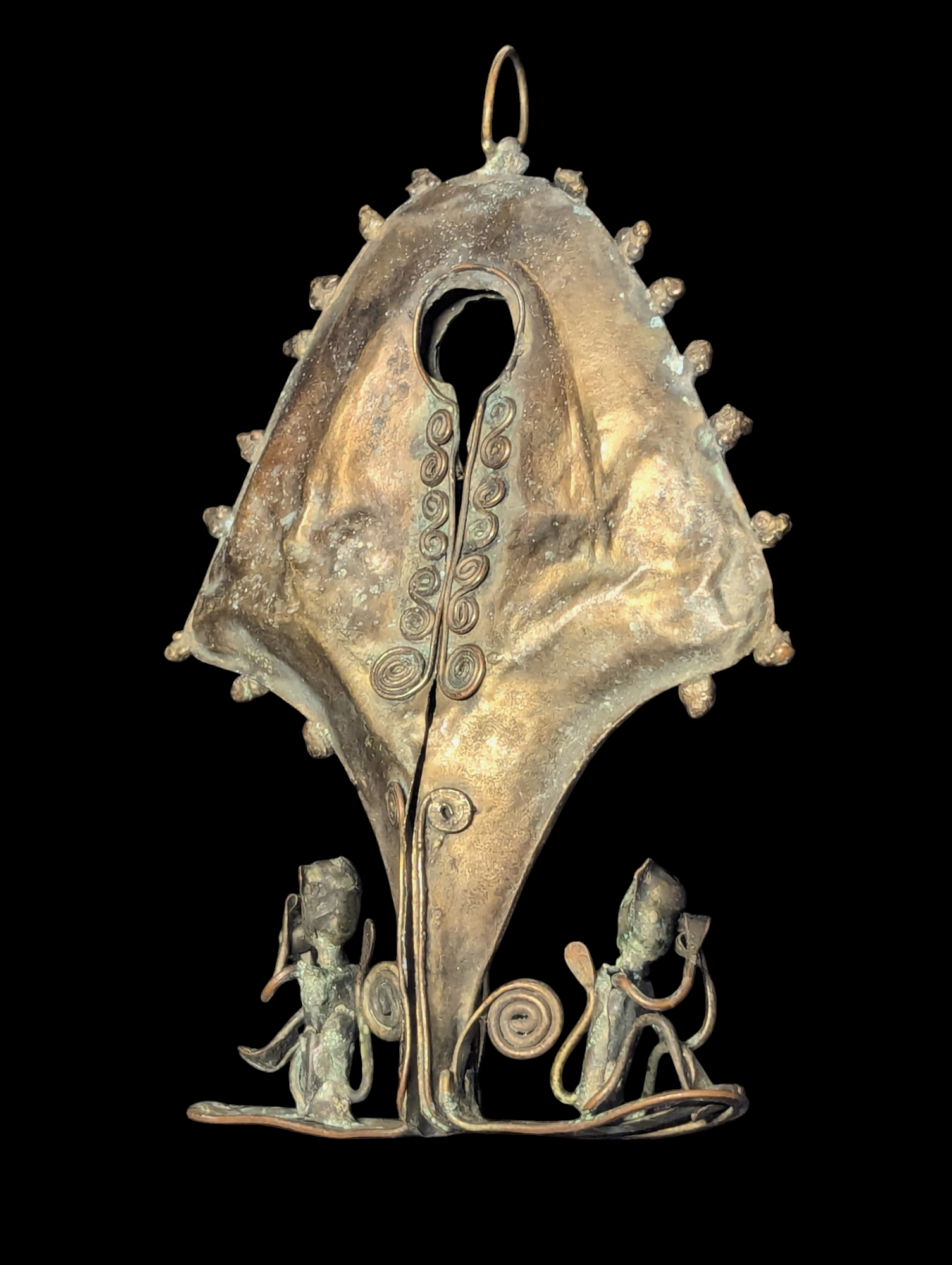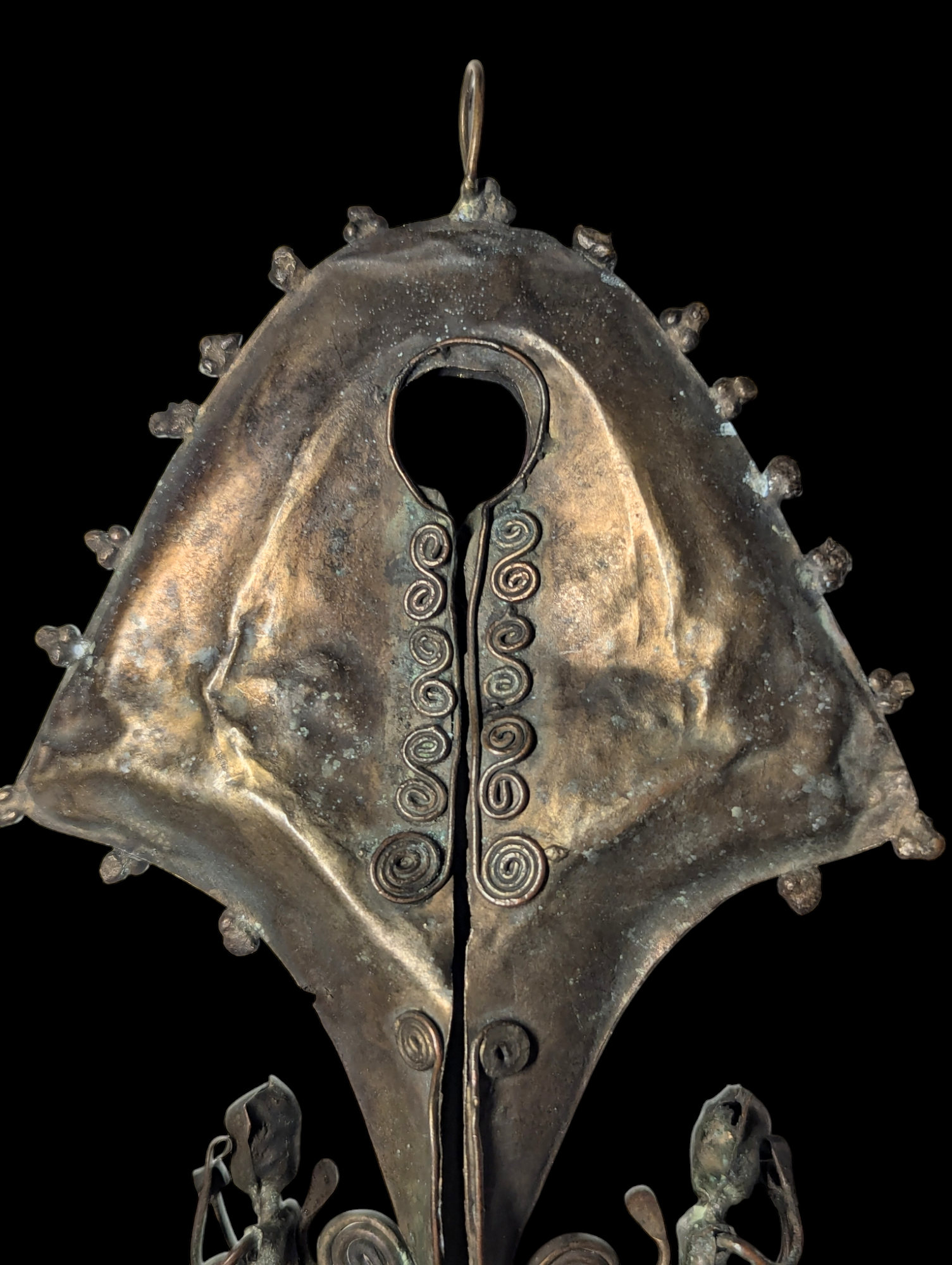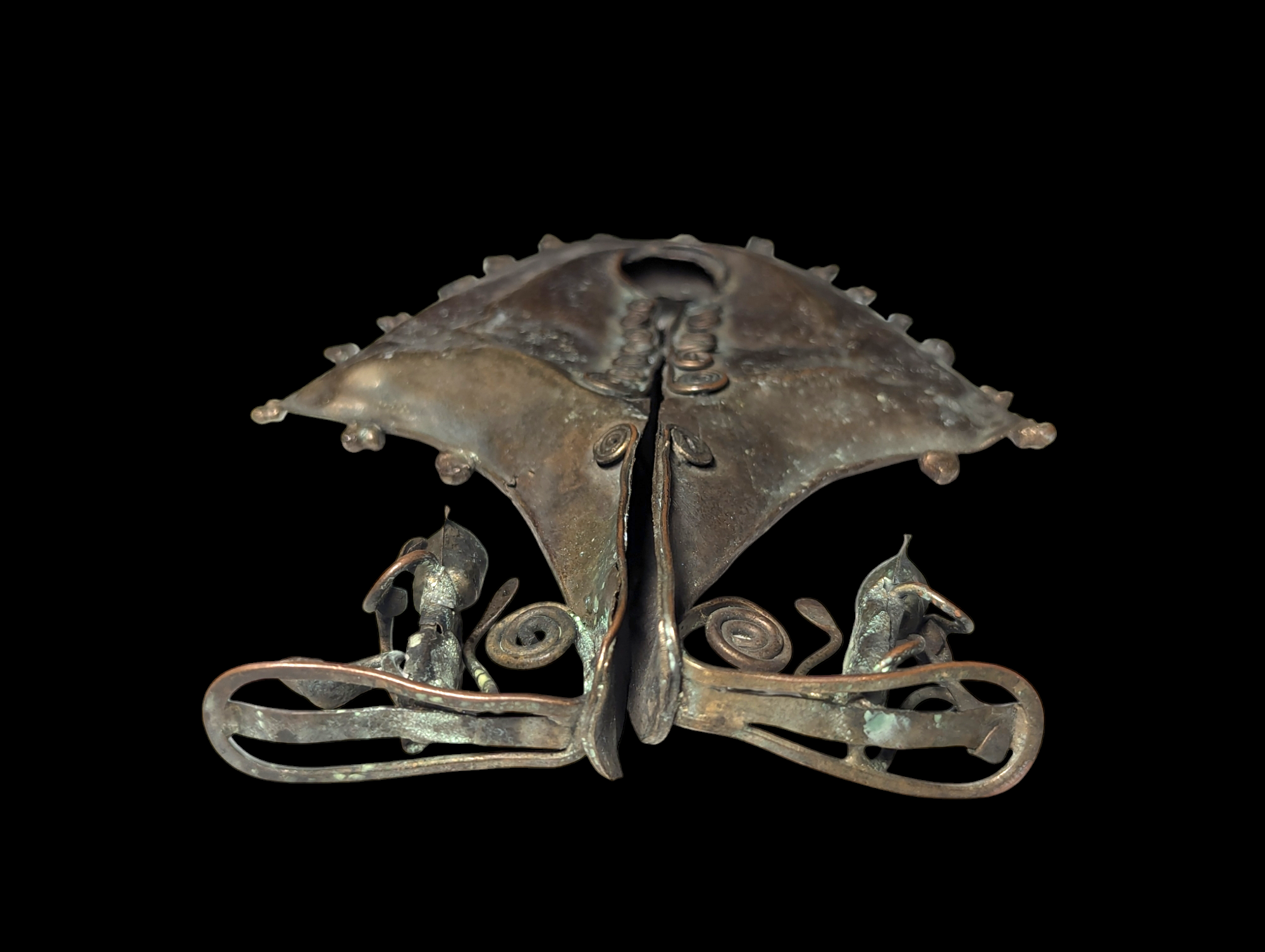Old Sumba Mamuli Pendant with Ancestral Figures - Japanese Private Collection
Old Sumba Mamuli Pendant with Ancestral Figures - Japanese Private Collection
Old Sumba mamuli pendant featuring intricate design and ancestral symbolism. The mamuli shape, reminiscent of a stylized female reproductive organ, embodies femininity and creation in Sumbanese culture. Intricate detailing is evident, with spirals running down the center and rows of small protrusions along the edges.
At the base of the pendant, two sculpted figures appear on each side, representing ancestral guardians or protective spirits. Such figures are commonly integrated into mamuli designs to symbolize respect for ancestors and to invoke spiritual protection. Traditionally, these pendants were used in ceremonies as symbols of wealth, status, and lineage.
REFERENCES: In terms of references, you can find similar items at institutions like the Metropolitan Museum of Art in New York, the Dallas Museum of Art, and the Musée du Quai Branly in Paris, where these Sumbanese artifacts are displayed as part of their Southeast Asian collections.
It includes a display stand for an elegant presentation.
PROVENANCE:
This Mamuli pendant comes from the collection of Mitsuharu-san, a Japanese manager who traveled extensively across Indonesia from the 1970s until his passing in 2022. Hailing from Hokkaido, Mitsuharu-san played a significant role in the development of the Japanese food chain "Hok-Ben" (Hokka-Hokka Bento), which grew to over 140 locations across Java and Bali. Mitsuharu-san’s frequent travels across Indonesia, particularly to the smaller Sunda Islands—such as Lombok, Flores, Sumba, Timor, and Sulawesi—ignited his passion for Indonesian tribal art. Over the years, he curated a remarkable collection of ethnic jewelry from East Indonesia, of which I have had the honor of acquiring select pieces that I now proudly offer here on eBay.
MEASUREMENTS: 4.7" x 3.5" x 0.7" (cm 12 x 9 x 1.8)



